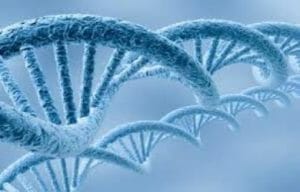
1) The disease that this child is likely to be suffering from is
- a) Dengue hemorrhagic syndrome
- b) Rocky Mountain Spotted Fever
- c) Eastern equine encephalitis
- d) Japanese encephalitis
On examination the child is semi conscious with tachycardia, Temp- 102⁰ C, BP- 100/70 mm Hg right arm supine. There is no evidence of pallor or icterus but the child shows features of a stiff neck. Physical examination showed generalized weakness, hypertonia and hyperreflexia. Routine investigations are essentially normal and CSF is drawn aseptically by lumbar puncture for routine cytology, biochemistry and microbiological examination.
2) The CSF examination of this patient along with raised opening pressure is likely to show
- a) High protein, low glucose, normal cells
- b) High protein, normal glucose, increased cells
- c) Low protein, normal glucose, increased cells
- d) Low protein, low glucose, normal cells
3) The confirmation of the etiological diagnosis of the disease will be by all of the following EXCEPT
- a) Antibody detection by IgM capture ELISA from serum or CSF
- b) Isolation of virus from CSF, tissue, blood
- c) Demonstration of viral nucleic acid by radioimmunoassay
- d) Demonstration of virus specific antigen/ genomic sequences from CSF, tissue, blood
Though the recovery is slow, the child completely recovers from the illness.
4) The residual neurological sequelae which the child and parents are to be warned about in such a disease include
- a) Aphasia, slow speech and paresis
- b) Recurrent focal seizures
- c) Dementia
- d)None of the above
5) All the following statements about prevention of the above disease are true EXCEPT
- a) It is the most common vaccine-preventable cause of encephalitis in Asia
- b) Vaccine is advocated for short-term (<1 month) travelers to rural endemic areas during JEV transmission season
- c) Mouse brain inactivated vaccine is the only vaccine available for use in children aged 1-16 yrs
- c) IXIARO vaccine is licensed for use in all children below the age of 1 year
Learning objectives:
To understand the epidemiology, clinical presentation and key features of the laboratory diagnosis and prevention of Japanese encephalitis
ANSWERS: 1d, 2b, 3c, 4a, 5d
A 37 year old male engineer presented with a febrile illness lasting 3 days associated with a maculopapular rash of the trunk following which he developed severe arthralgia of both elbows, right knee and left ankle resulting in him bending up in pain. There was also associated intense headache, photophobia and extreme prostration. He gave history of travel to Africa a week back for a conference where he had taken a jungle safari over the weekend. On examination he was found to have a pulse of 110/min, temp- 102⁰ C, BP- 110/70 mm Hg right arm supine.
1) The disease that the engineer is likely to be suffering from is
- a) Dengue hemorrhagic syndrome
- b) West Nile encephalitis
- c) Chikungunya
- d) Japanese encephalitis
3) The arbovirus is spread by the bite of which mosquito?
- a) Culex tritaeniorhynchus
- b) Aedes albopictus
- c) Anopheles gambiae
- d) Mansonia longipalpis
3) The virus is known to be associated with which of the following?
- a) Confusion, coma and severe diaphoresis associated with lymphadenopathy
- b) Rice fields where the avian reservoir are found in plenty
- c) Mother to child transmission
- d) Bleeding diathesis associated with shock
4) The mosquito vector is known to
- a) usually bite at dusk and dawn but may bite at any time especially indoors or in shady areas
- b) feed on sugar sources for energy but require a blood meal for the development of eggs
- c) aggregate in refuges during day and search for blood during night when the host is asleep and the air is cooler
- d) lay eggs in batches in cracks and crevices which are dark and rich in organic matter
Learning objectives:
To assess the understanding of the student of the agent, vector and key clinical features of Chikungunya
ANSWERS: 1c, 2b, 3c, 4a
Solution with Reasons
1) The disease that the engineer is likely to be suffering from is
- a) Dengue hemorrhagic syndrome (No history of hemorrhagic manifestations)
- b) West Nile encephalitis (No history of confusion/is not associted with arthralgia)
- c) Chikungunya
- d) Japanese encephalitis (No history of confusion/is not associted with arthralgia/ no reported from Africa as yet)
2) The arbovirus is spread by the bite of which mosquito?
- a) Culex tritaeniorhynchus
- b) Aedes albopictus
- c) Anopheles gambiae
- d) Mansonia longipalpis
3) The virus is known to be associated with which of the following?
- a) Birds are amplifying hosts (seen in West Nile encephalitis)
- b) Rice fields where the avian reservoir are found (seen in Japanese encephalitis)
- c) Mother to child transmission
- d) Bleeding diathesis associated with shock (seen in Dengue shock syndrome)
4) The mosquito vector is known to
- a) usually bite at dusk and dawn but may bite at any time especially indoors or in shady areas
- b) feed on sugar sources for energy but require a blood meal for the development of eggs (Anopheles spp)
- c) aggregate in refuges during day and search for blood during night when the host is asleep and the air is cooler (Phlebotomus spp)
- d) lay eggs in batches in cracks and crevices which are dark and rich in organic matter (Triatomine/ kissing bug)

Be the first to comment